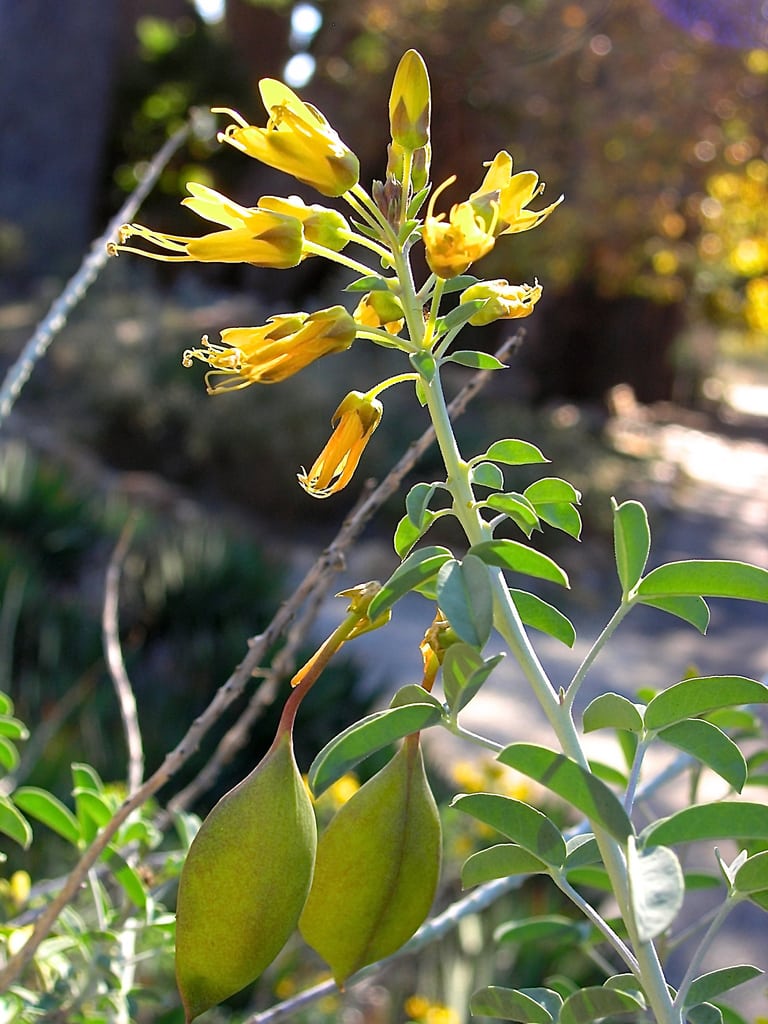What Is Bladderpod: Learn How To Grow Bladderpod Plants


with Liz Baessler Bladderpod is a California native that holds up very well to drought conditions and produces beautiful yellow flowers that last almost all year long. If you are looking for an easy-to-grow plant with low water needs and lots of visual interest, this is the plant for you. While it looks a bit like someone crossed an evening gown with something Dr. Seuss dreamed up, the plant also has elegant ornamental appeal and provides wild interest in the landscape. Learn how to grow bladderpod and add this plant to your native growing list.
What is Bladderpod?
Bladderpod (Peritoma arborea, formerly Cleome isomeris and Isomeris arborea) is a multi-branched shrub with corky bark and smooth twigs. The evergreen plant can grow 2 to 7 feet (61 cm. to 2 m.) in height. The plant has several other common names, among them bladderpod spider flower, California cleome, and burro-fat. The leaves are compound and divided into three leaflets. Some say that bruising the leaves releases a strong pleasant scent while others call the odor vile. The plant has been lumped into the Cleome family and does have decorative yellow blooms that are similar to cleome plants. The flowers are very attractive to pollinators, including native and introduced bees. As the name would indicate, the fruits are inflated balloon-like capsules, each with 5 to 25 pea-like seeds. Bladderpod plant info indicates the plant is related to capers. This is quite evident when you look at the dangling pods. Their shape and texture are very reminiscent of capers but are not considered edible, although the seeds within the pods are edible and can pass in a pinch for capers. While it is the seeds that are edible, the flowers were also once used by native dwellers as a meal when cooked for up to four hours.
How to Grow Bladderpod Plants
You can choose to grow the plants outdoors in USDA zones 8 to 11. The plant prefers well-draining, sandy soil, and it will tolerate high levels of salinity. It also performs best in soils with a pH of at least 6 and is very drought tolerant once established. Bladderwort can tolerate temperatures from 0 to 100 degrees F. (-18 to 38 C.). The best method for growing bladderpod flowers is from the seeds. They easily germinate and, in fact, wild plants self-seed readily. The seeds do not require stratification or striation or any other treatment to encourage germination. Simply prepare a seedbed that is well draining and of average fertility in full sun. Plant seeds 1 inch (2.5 cm.) deep. Alternatively, plant in late winter in flats indoors and transplant out in spring or fall. Plants should be spaced 4 to 6 feet (1-2 m.) apart. While the plants are young, take care to remove nearby weeds to ensure proper growth.
Bladderpod Plant Care
Growing bladderpod flowers is easy if you are in a warm enough zone. In fact, bladderpod plant info indicates that these desert dwellers prefer neglect. Of course, this is only once they have been established, but the plant doesn't need supplemental fertilizer or much extra water. Spring rains are usually sufficient to establish seedlings but a small amount of water in the hottest parts of summer will be appreciated. Keep competitive weeds away from the root zone of plants. As an addition to the landscape, bladderpod will provide food for many birds, especially quail. The plant is also fire resistant and has no known disease problems.
Sign up for the Gardening Know How newsletter today and receive a free copy of our e-book "How to Grow Delicious Tomatoes".

Bonnie Grant is a professional landscaper with a Certification in Urban Gardening. She has been gardening and writing for 15 years. A former professional chef, she has a passion for edible landscaping.